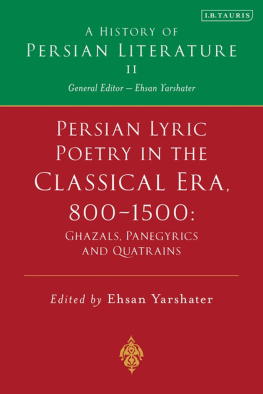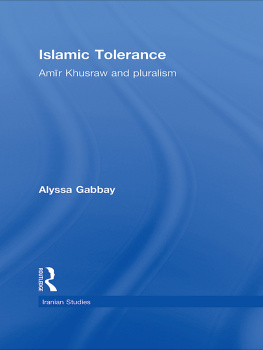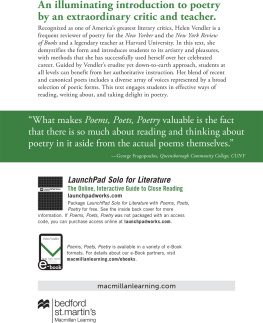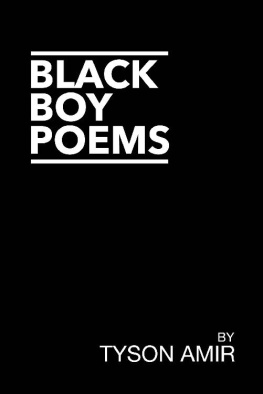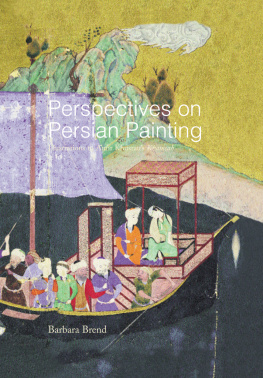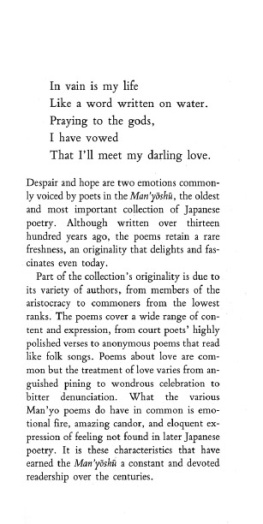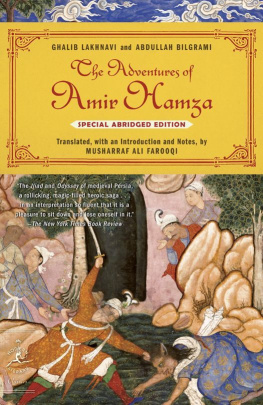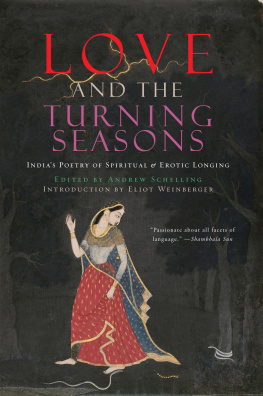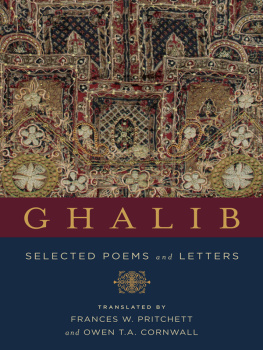Contents
THE SELECTED POETRY OF AMR KHUSRAU
In the Bazaar of Love
Translated and introduced by
PAUL E. LOSENSKY and SUNIL SHARMA
PENGUIN BOOKS
IN THE BAZAAR OF LOVE
Paul E. Losensky is associate professor at Indiana University, Bloomington, where he teaches translation studies, and Persian language and literature.
Sunil Sharma teaches Persian and Indian literatures at Boston University. He is the author of two books on Indo-Persian poetry.
Praise for the Book
[It] is a veritable treasure trove of the most beautiful lines composed by the Parrot of India, so called because of his fluency and eloquence in Persian... And here you will find lines that come significantly close to the original in beautyFinancial Chronicle
We all should read this book, first as a book of elegant poetry and then as a commentary on the infinitely diverse and multi-hued Indian cultureThe Hindu
The translators do offer us as thorough a summary as possible within the scope of an Introduction of the external political events and affiliations that made up Khusraus career in the service of five rulers in Delhi. They also offer the reader unfamiliar with the titles of Khusraus works an introduction to these works, setting each into a particular moment in his career. Among the other merits of this book is that its selection of poems contains representatives of every poetic genrefrom panegyric to ghazal, Hindi riddle and masnavi (a genre of Persian narrative poem in rhymed couplets)in which Khusrau wrote... Readers should expect meticulously correct translations of poetry whose originals revel in varieties of word play and are thus often nearly untranslatable. Were it not for this venture, those of Khusraus English-reading admirers who dont know Persian or Hindi, or both, would be deprived of the rare correctness these translations provideBiblio
From time to time, we glimpse beauty and intensity... Asian Age
man bi-dn nazram ki gar miram bi-syam bin-gar
bn kih chu man chand kas murda-st dar bzr-i ishq
I vow to die
that you might look my way.
See how many have died like me
in the bazaar of love.
Introduction
Amr Khusrau (12531325)often also written as Khusraw or Khusrowas one of the greatest poets of medieval India, writing in both Persian, the courtly language of Muslims of the sultanate period, and Hindavi, the vernacular language of the Delhi area. Known as Tt-yi Hind (Parrot of India) for his poetic eloquence and fluency in Persian, Amr Khusrau has stood as a major cultural icon in the history of Indian civilization for almost seven hundred years. He is especially remembered as the founder of the GangaJamni Hindustani culture which is a synthesis of Muslim and Hindu elements. He helped to give a distinctive character to Indian Islamic cultural traditions through his contributions to the fields of Indian classical music, Islamic mysticism (Sufism), South Asian Sufi music (qawwl), and Persian literature. Significantly, he also contributed to the development of Hindavi, in which both modern Hindi and Urdu have their roots. Positioned at the juncture of two cultures, Amr Khusraus prodigious talents and prolific literary output make him one of the outstanding figures in Islamic, Indian, and indeed world cultural history.
Amr Khusraus legacy is far more widespread than people realize, from his vast corpus of Persian poetry that continues to be read in the modern Persian-speaking world (Iran, Afghanistan and Tajikistan) to this day, to the devotional qawwls that are performed and listened to in India, Pakistan, and beyond. He is rightly acknowledged as the best Indian poet to have written in Persian, and his influence on later Persian and Urdu literature was immense. In South Asia, he is revered for his contributions to music and mysticism but most people are familiar with only a small portion of his immense body of poetry and prose in Persian, or have no access to these works due to the language barrier. This has not been Amr Khusraus fate alone. The Persianate world in which he lived, the entire area from Anatolia (now Turkey) to India, no longer exists as a cultural continuum. Though the ruling elite of these lands was mainly Turkish by ethnicity, the language of high culture was Persian, with Arabic serving as the sacred language of religion. But Persian ceased to be a language of learning in the Indian subcontinent during the British colonial period, and with the fragmentation of the Persianate world by the forces of modern nationalism, many poets who form part of the Indian Persian heritage have suffered a similar fate, including the nineteenth-century Ghlib, who wrote prodigiously in Persian as well as in Urdu. However, Amr Khusraus Hindavi poetry and Persian poetry on Sufi themes are still part of a living and dynamic tradition.
Amr Khusraus personality is shrouded in mystery and attempts to piece together his biography can be frustrating. Modern biographers have difficulty resolving the apparent conflict between his professional life as a courtier and his spiritual life as a mystic. As a courtier Khusrau would have had to overlook many morally dubious actions and practices on the part of his patrons, for which he must have suffered some ethical conflict. Furthermore, while tradition credits Khusrau with a body of Hindavi poetry and the invention of several musical instruments, there is no written, documentary evidence to support this claim. Fortunately for us, there is quite a bit of biographical information in Amr Khusraus own writings and in numerous poetic and Sufi biographical narratives from throughout the medieval period. Although the information is not always reliable and the resulting picture of the poet seems one-dimensional or larger than life, it is more than we have for most other pre-modern poets. Getting to the real Amr Khusrau challenges us to sort through an overwhelming number and variety of original sources, many unpublished, and to unravel the layers of cultural myth and legend that have shrouded his personality over the centuries.
There are some remarkable parallels between Amr Khusraus life and that of the renowned Sufi poet, Jalluddn Rm (d. 1273), who lived a generation or two before him. As a result of the Mongol incursion into Central Asia Rm fled westwards with his family and ended up in Konya, in what is now Turkey. Similarly, a couple of decades later, Khusraus family moved eastwards and ended up in India. Both poets had their origins in the region of Balkh in present-day Afghanistan. There are some salient differences in their biographies: Khusrau was born in India, to a Turkish father and Indian mother, and identified himself as an Indian; Rm, ethnically Iranian, was born near Balkh, far from Konya, the city where he was to settle. Also, Khusrau was deeply involved in court life, and most of his Persian writing, whether poetry or prose, is of a panegyric or historical nature, whereas Rm was not a court poet and his output is entirely mystical. Thus, it is appropriate that Khusrau is honoured with the title


